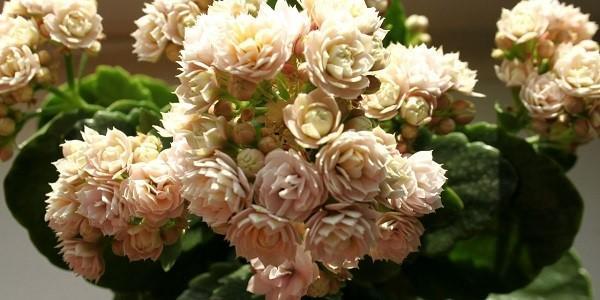How to make Kalanchoe bloom
 In most cases, new plants appear from florists by purchasing a young bush in a store, while many tend to choose an already flowering plant, because this way you can see all the beauty and features of the variety. This is especially true of decorative flowering plants, in particular Kalanchoe, which have a variety of shades of inflorescences.
In most cases, new plants appear from florists by purchasing a young bush in a store, while many tend to choose an already flowering plant, because this way you can see all the beauty and features of the variety. This is especially true of decorative flowering plants, in particular Kalanchoe, which have a variety of shades of inflorescences.
In this case, a situation often arises when kalanchoe, blooming at the time of purchase, refuses to do it at home next season. Outwardly, the plant is absolutely healthy, actively growing a leafy cap, but does not lay flower buds.
To make the Kalanchoe bloom, you need to create the right conditions for it:
- lighting;
- temperature regime;
- watering.
Daylight hours and temperature conditions
The flower loves good lighting, so the northern windowsill is clearly not for him. In summer, it is advisable to take the pot outside or put it on the balcony.
Flower buds in Kalanchoe are laid only in conditions of low temperature and short daylight hours. In the fall, it is good to keep the flowerpot outside until the first frost. Thus, the Kalanchoe will have conditions as close as possible to natural ones.
In winter, the flower pot should be placed by the window pane, where the temperature is usually lower.
For bud formation, the ideal night length should be 12-14 hours. If possible, the Kalanchoe should be placed in a room where the lighting will be natural: the sun shines during the day, and the light does not turn on often in the evening. If this is not possible, the flower can be covered every evening with a dark bag that does not allow light to pass through. Remove the shelter in the morning.
Watering frequency
Since Kalanchoe is a succulent, it is able to accumulate moisture in its leaves and stem. For this reason, the plant does not tolerate abundant and frequent watering, and stagnant moisture in a pot or pan can be fatal for it.
It is necessary to water the flower only after the earthen coma has completely dried.
After the Kalanchoe has faded, it is recommended to shorten the shoots a little so that the bush starts branching and takes on a beautiful shape. The resulting cuttings can be used for propagation. Flowers that have faded should also be cut with scissors, because they themselves only dry out, but do not fall off.